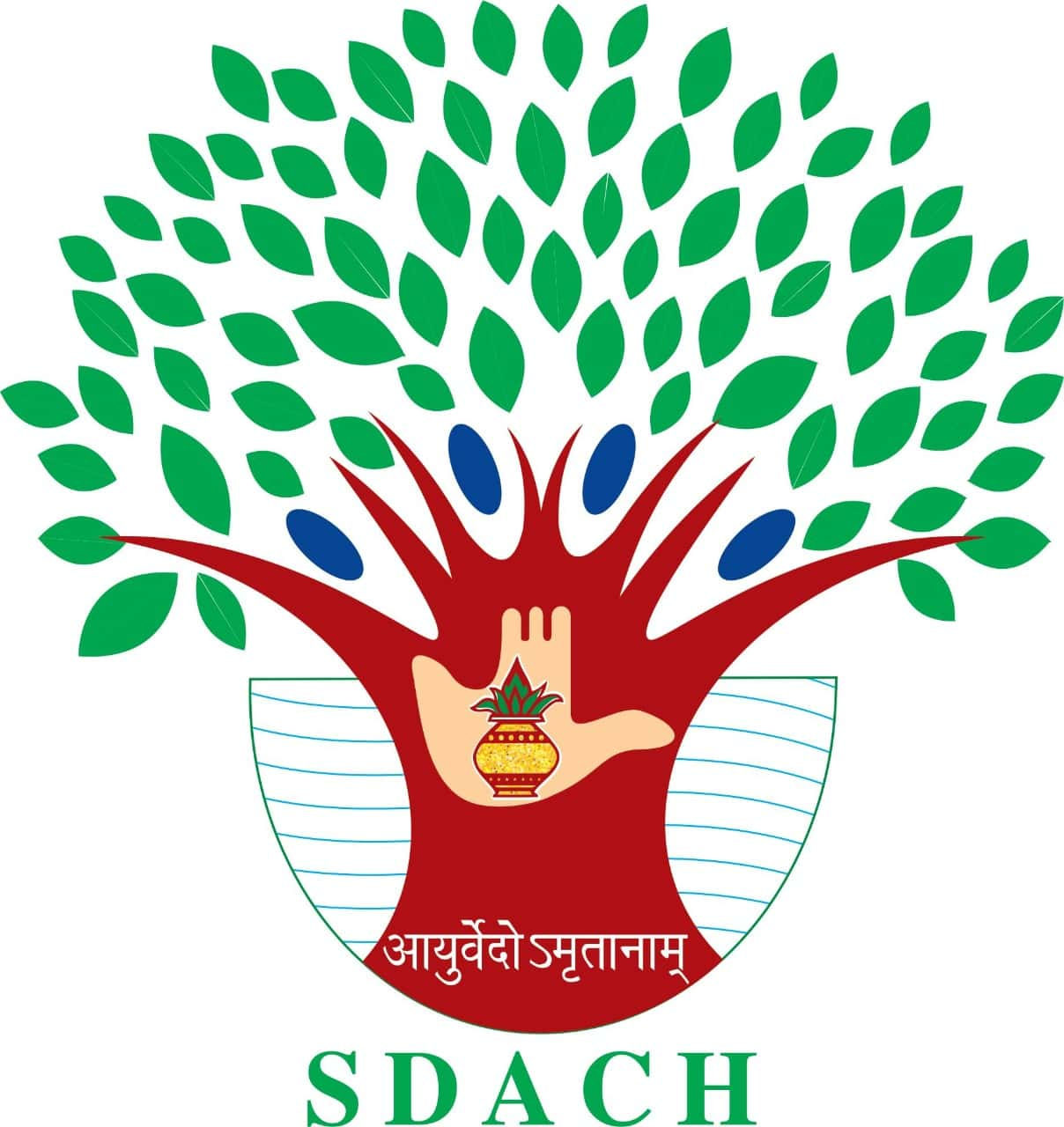Botanical Name : Sterculia urens Roxb.
Family : Sterculiaceae (Cacao family)
Identification No.: SDACH/HG/229
Introduction :
Gum karaya is a medium-sized, deciduous tree to 15 m in height, usually with a clean, crooked, short bole up to 2 m DBH; branches large, spreading; bark thick, greyish-white or reddish, smooth, shining with a thin, white transparent outer coat, peeling off in papery flakes. Leaves on long petioles, crowded at the ends of branches, palmately 5-lobed, 20-30 cm diameter; tomentose beneath, glabrous above, entire, acuminate; stipules caducous. Flowers greenish yellow, small, in terminal panicles; follicles 4-6, ovoid-oblong, about 2.5 cm diameter, coriaceous, red, covered with stinging hairs. Infact, the specific name urens means stinging in reference to the hairs on flowers. Fruit consists of 5 sessile, radiating, ovate-lanceolate hard, coriaceous carpels, 7.5 cm long, red when ripe, covered outside with many stiff bristles. Trees exude gum karaya used in foodstuffs as emulsifiers, stabilizers and thickeners. Seeds are eaten after roasting. Seeds and young tender roots are eaten in times of famine.
Names in different Indian languages :
Assamese : Odla
English : Kulu, Kateera-gum, Indian-tragacanth, Gum Karaya, Katira, Sterculia gum
Gujarati : Kogdol
Hin : Gular
Hindi : Katira, Karaya, Gulu, Kulu
Kannada : Pinari, Kendale, Kempudale
Konkani : Pandrukh
Malayalam : Annanvazhukki, Thondi, Theethondi, Annaanvazhukki, Paravakka, Thonti, Kithondi, Thiiththonti
Marathi : Kawali, Kandol
Oriya : Gudalo
Rajasthani : Katila
Tamil : Senthanukku, Vellai-puthali, Centanakku, Senthalamaram, Kutiraippitukkan, Kavalam
Telugu : Tapasi Chettu
Distribution & Habitats :
Throughout India except Jammu & Kashmir, Punjab, Himachal Pradesh, Uttarakhand, Sikkim, Arunachal Pradesh, Assam, Nagaland, Meghalaya, Manipur, Tripura, Mizoram.
Synonyms :
Cavallium urens (Roxb.) Schott & Endl.
Clompanus urens (Roxb.) Kuntze
Kavalama urens (Roxb.) Rafin.
Morphology :
Tree Type: Deciduous
Canopy: Dense
Leaf Type: Hulchi like
Flower: In terminal panicles; foetid. Flowering from December-March.
Fruit: A follicle, 4 or 5 lobed; lobes ovoid-oblong with ferruginous stiff-hairs, red turning green. Fruiting March onwards.
Field tips: Bark papery and smooth, grey with white patches. Wood very soft, pith with red resin canals.
Leaf Arrangement: Alternate-distichous
Leaf Type: Palmate
Leaf Shape: Palmate
Leaf Apex: Caudate acuminate
Leaf Base: Cordate
Leaf Margin: Entire
Uses :
The gum is used as a bulk laxative. It is not absorbed by the body, but swells up inside the gut to provide a bulk of material that gently stimulates peristalsis. The gum is also used to treat throat infections.
Substitute/Adulterant
Adulterated with other inferior gums such as Acacia or other Sterculia species.
Phytochemicals
Contains polysaccharides (galactose, rhamnose, and galacturonic acid), sterculic acid, tannins, and flavonoids.
Raspanchaka
Rasa: Madhura (Sweet)
Guna: Snigdha (Unctuous), Guru (Heavy)
Virya: Shita (Cold)
Vipaka: Madhura (Sweet)
Prabhava: Cooling demulcent
Dosha Shamakta: Pacifies Pitta and Vata
Karma (Therapeutic Actions)
Mridurechaka (Mild laxative)
Shitaprasamana (Cooling)
Vranaropaka (Wound healing)
Kantya (Soothes throat)
Balya (Tonic)
IUCN Status
Near Threatened (NT) due to overharvesting for gum extraction.
Research Updates
1. Pharmacognostic Evaluation (2021): Confirmed identity through microscopy and physicochemical studies (International Journal of Pharmacognosy).
2. Anti-inflammatory & Antioxidant Activity (2022): Methanolic extract showed significant free radical scavenging properties.
3. Wound Healing Study (2020): Aqueous extract of Sterculia urens gum improved wound contraction and epithelization in rat models.







